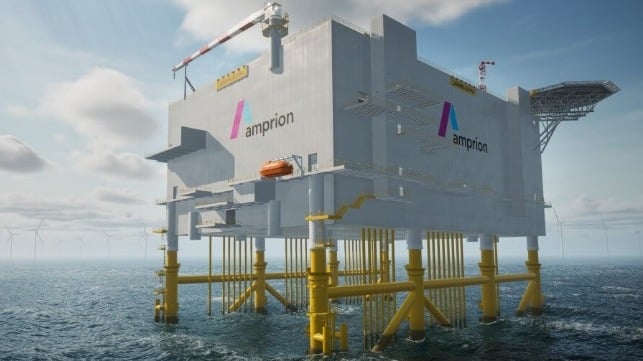Meyer Werft Diversifies Receiving First Offshore Converter Contracts

Meyer Werft received its first orders for its new line of business tied to Germany’s offshore energy sector. The German shipbuilder has concluded a deal for its Papenburg shipyard to build offshore converter platforms just a week after the company also announced the launch of new offshore businesses for its Neptun Weft yard in eastern Germany.
The shipbuilding views the new offshore contract as a breakthrough in its efforts to develop new lines of business after cruise ship construction orders were interrupted by the pandemic and its aftermath. The Papenburg yard is preparing to deliver a cruise ship to Carnival Cruise Line on December 4 while it still has orders for two large cruise ships for Disney Cruise Line. Work is also underway on two smaller cruise ships, one due to deliver next year to Royal Caribbean Group’s Silversea Cruises and another being built for Japan’s NYK Group.
In partnership with Spanish shipyard Dragagos, the Papenburg yard will be working on offshore convert platforms for Amprion. The company, which was formerly part of RWE, is one of four independent transmission system operators for electricity in Germany.
“This successful expansion of our product portfolio secures knowledge and employment at our German shipyards and at the same time makes a decisive contribution to the energy transition," explains Jan Meyer. As Chief Business Innovation Officer, he is responsible for the development of new business areas, including the new offshore wind business.
Meyer Werft will be responsible for the majority of the steelwork for converter platforms that will be used with Amprion’s projects connecting power from the offshore North Sea wind farms to different regions within Germany. Meyer Werft is supplying steel block sections with a volume of almost 6,000 tonnes of steel each for DolWin4 and BorWin4 and around 15,500 tonnes of steel each for BalWin1/BalWin2. The volume of steel, Meyer highlights, roughly corresponds to that of a large cruise ship with delivery of the components scheduled between the fall of 2024 and the spring of 2027.
The converts will be used for the DolWin4 and BorWin4 grid connection systems which will transmit power from the North Sea to Lingen in southern Emsland (a district which borders North Rhine-Westphalia in the south and the Netherlands in the west). DolWin4 is an approximately 130-mile-long connection while BorWin4 will have a total route length of around 175 miles. Each of them will be able to transmit a capacity of 900 megawatts and are due to be in service in 2028.
The contract also calls for supply convert platforms for BalWin1 which will reach Wehrendorf in southern Lower Saxony and BalWin2 which will transmit power to Westerkappeln in northern North Rhine-Westphalia. BalWin1 is an approximately 225-mile-long connection while BalWin2 will also have a total route length of over 230 miles, with both relieving the strain on the coastal transmission systems. Each of them has a transmission capacity of 2,000 megawatts, and together they will be able to satisfy the electricity needs of around four million people from offshore wind energy. The grid connection systems will go into service in 2029 (BalWin1) and 2030 (BalWin2).
Dragados highlights while the converter platforms will be manufactured at the Spanish shipyard Dragados, the majority of the platform components will be manufactured in Germany.
